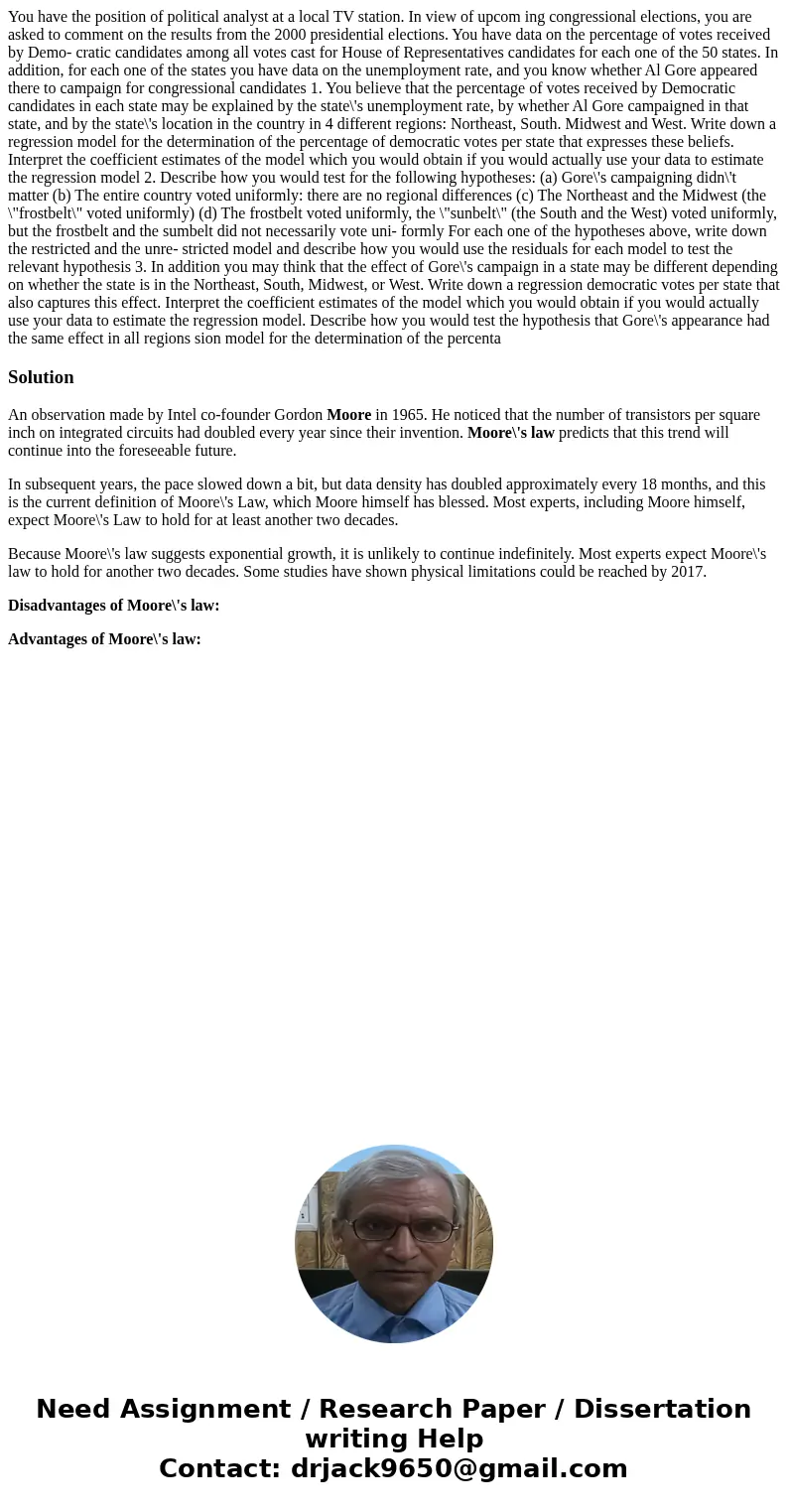You have the position of political analyst at a local TV station. In view of upcom ing congressional elections, you are asked to comment on the results from the 2000 presidential elections. You have data on the percentage of votes received by Demo- cratic candidates among all votes cast for House of Representatives candidates for each one of the 50 states. In addition, for each one of the states you have data on the unemployment rate, and you know whether Al Gore appeared there to campaign for congressional candidates 1. You believe that the percentage of votes received by Democratic candidates in each state may be explained by the state\'s unemployment rate, by whether Al Gore campaigned in that state, and by the state\'s location in the country in 4 different regions: Northeast, South. Midwest and West. Write down a regression model for the determination of the percentage of democratic votes per state that expresses these beliefs. Interpret the coefficient estimates of the model which you would obtain if you would actually use your data to estimate the regression model 2. Describe how you would test for the following hypotheses: (a) Gore\'s campaigning didn\'t matter (b) The entire country voted uniformly: there are no regional differences (c) The Northeast and the Midwest (the \"frostbelt\" voted uniformly) (d) The frostbelt voted uniformly, the \"sunbelt\" (the South and the West) voted uniformly, but the frostbelt and the sumbelt did not necessarily vote uni- formly For each one of the hypotheses above, write down the restricted and the unre- stricted model and describe how you would use the residuals for each model to test the relevant hypothesis 3. In addition you may think that the effect of Gore\'s campaign in a state may be different depending on whether the state is in the Northeast, South, Midwest, or West. Write down a regression democratic votes per state that also captures this effect. Interpret the coefficient estimates of the model which you would obtain if you would actually use your data to estimate the regression model. Describe how you would test the hypothesis that Gore\'s appearance had the same effect in all regions sion model for the determination of the percenta
An observation made by Intel co-founder Gordon Moore in 1965. He noticed that the number of transistors per square inch on integrated circuits had doubled every year since their invention. Moore\'s law predicts that this trend will continue into the foreseeable future.
In subsequent years, the pace slowed down a bit, but data density has doubled approximately every 18 months, and this is the current definition of Moore\'s Law, which Moore himself has blessed. Most experts, including Moore himself, expect Moore\'s Law to hold for at least another two decades.
Because Moore\'s law suggests exponential growth, it is unlikely to continue indefinitely. Most experts expect Moore\'s law to hold for another two decades. Some studies have shown physical limitations could be reached by 2017.
Disadvantages of Moore\'s law:
Advantages of Moore\'s law:

 Homework Sourse
Homework Sourse